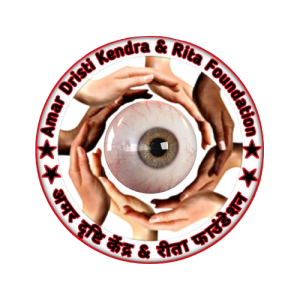Pink Eye on the Rise ( Conjuntivitis)
Conjunctivitis, often referred to as pink eye, is a common inflammation of the conjunctiva, the thin transparent tissue lining the eyelids and covering the white part of the eyeball. This inflammation causes various symptoms, including redness, itching, watering, and discharge.
While conjunctivitis can be irritating and uncomfortable, it's usually a benign condition that resolves on its own within a few weeks. However, some forms can be contagious and require proper hygiene measures to prevent spreading.
This overview explores conjunctivitis, covering its causes, symptoms, diagnosis, treatment, and prevention methods.
Causes of Conjunctivitis
Conjunctivitis can arise from various factors irritating or infecting the conjunctiva. Here are the main categories:
- Viral: This is the most common cause, accounting for up to 70% of cases. Viruses responsible for the common cold or upper respiratory infections can also cause conjunctivitis.
- Bacterial: Bacterial conjunctivitis is less frequent but can be more severe. It's often caused by bacteria commonly present on the skin or around the eyes.
- Allergic: Allergens like pollen, dust mites, pet dander, or smoke can trigger an allergic reaction in the conjunctiva, leading to inflammation.
- Giant papillary conjunctivitis (GPC): This type is associated with chronic irritation from contact lens wear, particularly oversized or poorly fitting lenses.
- Chemical or irritant conjunctivitis: Exposure to chemicals, smoke, fumes, or other irritants can inflame the conjunctiva.
Symptoms of Conjunctivitis
The following symptoms are common across most types of conjunctivitis:
- Redness: The whites of the eye become red and inflamed due to dilated blood vessels.
- Itching: Itchy eyes are a prominent symptom, especially in allergic conjunctivitis.
- Watering: Increased tear production can occur to try and flush out the irritant or infection.
- Discharge: Depending on the cause, discharge can be watery, clear, mucoid (stringy), purulent (pus-like), or foamy.
- Gritty sensation: A feeling of something gritty or sandy in the eye is a common complaint.
- Eyelid swelling: In some cases, the eyelids may become slightly swollen and puffy.
- Light sensitivity: Increased sensitivity to light can occur in some cases.
Note: It's important to seek professional medical advice if you experience:
- Severe pain or discomfort
- Blurred vision
- Sensitivity to light that significantly impacts daily activities
- Discharge that is bloody or thick and green
- Symptoms that worsen or persist for more than two weeks
Diagnosis of Conjuntivitis
Diagnosis of conjunctivitis typically involves a comprehensive eye examination by an ophthalmologist or optometrist. The doctor will assess your symptoms, examine your eyes for redness, discharge, and any other signs of inflammation.
In some cases, additional tests might be needed to determine the cause:
- Swab test: A swab from the conjunctiva may be taken to identify the specific virus or bacteria causing the infection.
- Tear analysis: Analyzing your tears can help differentiate between allergic and non-allergic conjunctivitis.
Treatment of Conjunctivitis
The treatment for conjunctivitis depends on the underlying cause:
- Viral conjunctivitis: Often resolves on its own within 1-2 weeks. Treatment focuses on relieving symptoms with artificial tears, cool compresses, and pain relievers (if needed).
- Bacterial conjunctivitis: Typically treated with antibiotic eye drops or ointments prescribed by a doctor. Completing the entire course of medication is crucial.
- Allergic conjunctivistis: Over-the-counter antihistamine eye drops or allergy medications may be recommended to manage symptoms. In severe cases, prescription medication might be needed.
- Giant papillary conjunctivitis: Treatment involves proper lens hygiene practices, switching to daily disposable lenses, or trying different lens materials. In some cases, medication might be needed.
- Chemical or irritant conjunctivitis: Irrigation with clean water or saline solution is often the first step to remove the irritant. Lubricating eye drops might also be helpful.
Prevention of Conjuntivitis
Here are some tips to help prevent the spread of conjunctivitis:
- Frequent handwashing: Wash your hands thoroughly and often, especially before touching your eyes and after contact with someone who has conjunctivitis.
- Avoid touching your eyes: This can transfer germs from your hands to your eyes.
- Personal hygiene items: Don't share towels, washcloths, eye makeup, or other personal items that could be contaminated.
- Disposable eye products: Consider using disposable eye wipes or makeup applicators to minimize the risk of spreading germs.
- Proper contact lens care: Follow proper hygiene practices when handling contact





 Author - Admin
Author - Admin








No comments:
Post a Comment